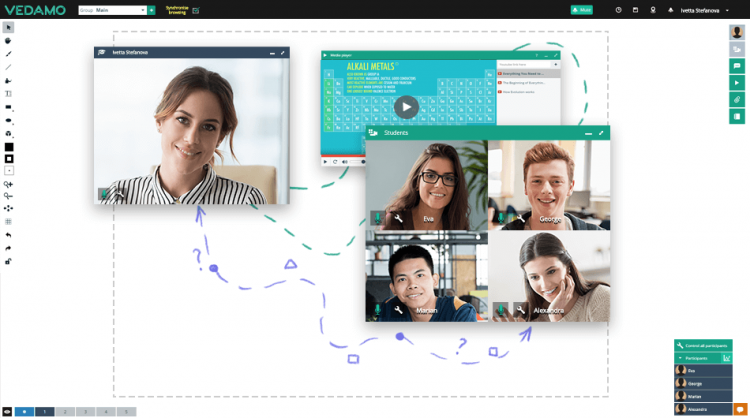Identifying and working with different types of learners in the virtual classroom requires creative solutions and the use of its software features.
Learning is a personal process that evolves differently for each of us. When we strive to remember something new, we are persuading our brains to store a certain amount of information, often with a deadline. For some of us this happens almost effortlessly on one topic, but then we struggle to master a different one. For others it could be the other way around.
The Importance of Diversity
Different students have different needs that must be met during the learning process. The teacher is the one who has to adapt each lesson’s content in a way that it best suits their students’ requirements. However, if a class planned in a certain way,was really successful with a single student or a group, there is no guarantee that this will be the case with other learners. Aspects of diversity that can affect a lesson include a learner’s age, interests, state of mind, and many other factors. Student diversification is what makes each lesson unique and gives the teacher the opportunity to change and evolve their presentation each time.
In order to assemble a class the educator needs to invest time and effort: this starts with the lesson plan and goes all the way to the additional materials preparation.
Humans generally have similar reactions in similar situations and the same is true as far as lessons are concerned. There are, of course, many factors to think about, but getting to know one’s students can be really helpful for conducting successful classes.
Some Types of Learners In The Virtual Classroom

The educational needs of different learners depend not only on their individual types of memory and learning styles, but also on their particular circumstances, and even on their moods. Therefore, the learners’ distinct educational needs should be met by the teacher with each lesson. Of course, the tutor is not in a position to foresee every detail that can impact every student during each session, but is able to identify the most common reactions and adapt accordingly.
The Refusing Type
Features: The refusing student is the one who always disagrees. From the start they are never convinced and are often suspicious about everything that the teacher has to say.
However, once these students enter the virtual classroom environment they feel very comfortable. They are able to use the distance that is created by the technology in their favor by turning it into their own personal space that is virtually inaccessible by the teacher.
Teacher’s response: A simple and easy way to improve this type of learners’ experience is for the teacher to try and involve the refusing student as much as possible and to show them that their participation matters and has an impact on the entire learning session.
The Agreeing Type
Features: The agreeing student is one who always says “Yes” to everything. They are ok with every new idea or activity no matter how unconventional it may be. On the other hand, these learners never admit that they don’t understand something, they never ask questions, and they never strive for additional or better explanations. This is a really bad trait because they are missing their opportunity to learn and understand in more depth.
Teacher’s response: The teacher should encourage an agreeing student to ask their questions freely and ensure that they are an important part of the learning process, one that is actually helpful not only to them, but to others as well. This approach may help them learn better, but is not always an easy task.
In order to do this, the teacher needs to make this type of student comfortable and create a safe environment for them by fostering trust.
This can be done more easily in a virtual classroom than in a traditional one. You can simply use the grouping or the chat tool to give your agreeing student the opportunity to freely ask questions without the fear that they may cause any disturbance to the rest of the group.

The Enquiring Student
Features: The enquiring student is someone who feels the need to know every specific aspect about a topic. In most cases these students are people with professions that require them to pay attention to detail. The enquiring student often gets carried away and starts asking about features, phenomena, and other details that are not yet scheduled to be learned, if at all. And while asking questions is a positive thing during a lesson, these students’ behavior is often disruptive, which not only destroys the teacher’s plan for the session, but also negatively impacts the rest of the learners.

Teacher’s response: In this case too, the solution inside the virtual classroom is easy, elegant, and even more effortless than in the traditional learning environment. When dealing with an enquiring student who is asking too many questions, the teacher can benefit from the virtual classroom’s features by simply providing the interested learner with the additional information by using links to reading materials. In this way both the enquiring learner will be satisfied and the lesson’s structure will be kept intact.
